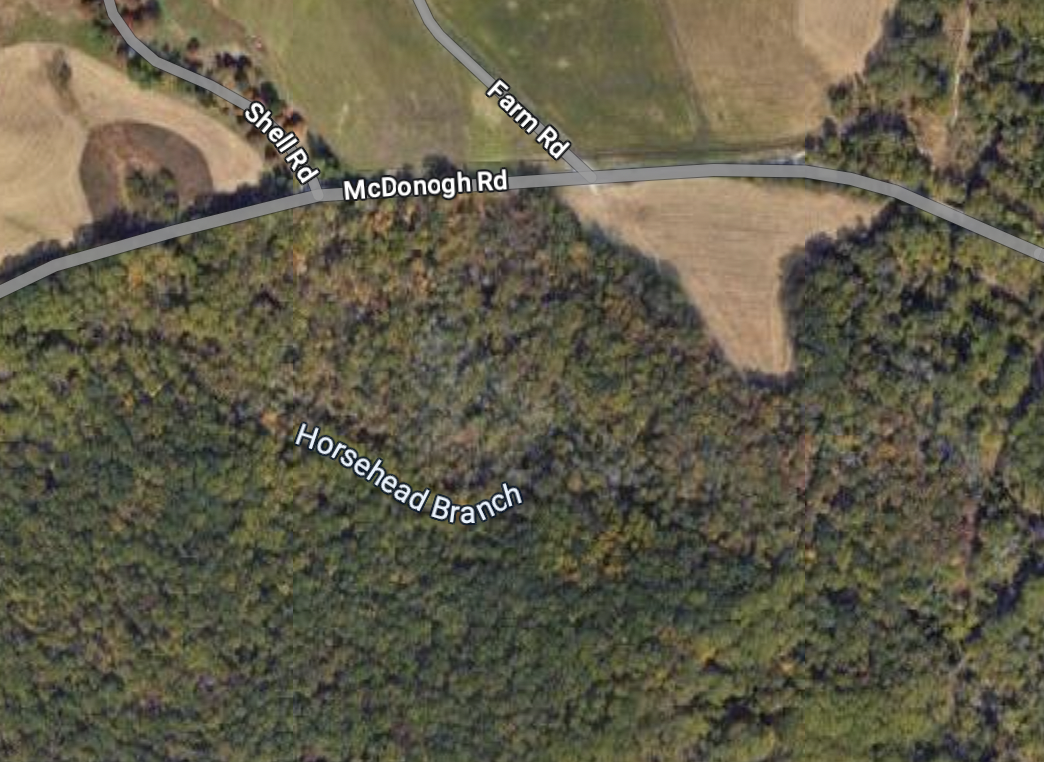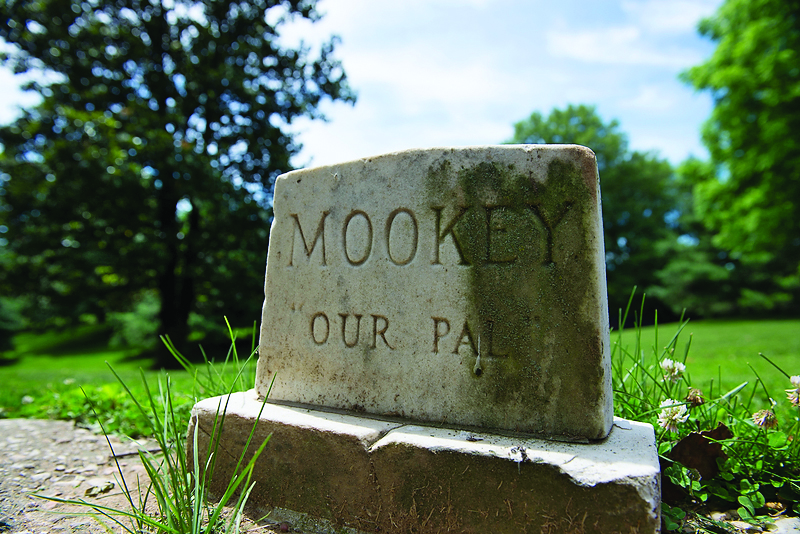Across from Farm and Shell Roads on the south side of McDonogh Road is an open, v-shaped field. At one time, it was thought that the outline of the field resembled the jaw, neck, and shoulder of a horse, and so the woods next to the field became known as Horsehead Woods.
Measuring about 105 acres, Horsehead Woods has been a part of the School property since the land was purchased in 1872, and it includes the Horsehead Branch stream that intersects with the Gwynns Falls. Within the woods are the ruins of an abandoned quarry operation and what appears to be the foundation of an old stone house. Former Headmaster Bob Lamborn ‘35, who spent much of his life on campus, once recalled riding horses along the trails in the woods and jumping over the occasional downed timber.
Horsehead Woods was the focus of a special feature in the December 13, 1993, issue of The Week. The articles, written by members of an Upper School course on the land, described the variety of tree species trees and plants and noted that the forest floor had abundant patches of a unique and rare plant called ground pine. One story described: “On the south ridge of the forest there is a stand of Oak and Birch. However, in the flat land, there is a large stand of tulip poplar. Tulip poplar has always been an economically valuable species of tree, but with increased governmental regulations on logging, the demand for this particular tree has skyrocketed, as well as the value. Horsehead Woods also boasts a thriving wetlands that provide an ecological haven for wildlife and vegetation.”
One of the stories looked at the history and considered the future of the woods noting, “In the past, when McDonogh was a military boys’ school, the woods was a favorite place for the boys to camp, hunt, and sometimes fish. But except for a small logging operation in the mid-seventies, the woods has remained relatively unused during the past several decades.”
The feature went on to explain that the writer and classmates had been exploring the woods trying to find ways to share its beauty with the rest of the school, and at the same time, considering the possibility of logging the woods. “In deciding whether or not to log, we will try to achieve a balance between ecological safety and economic value. But we have made ecological protection our most important priority. It is our belief that with enough care, Horsehead Woods can be a beneficial place for all: a money maker for the school, an environmentally protected landscape for wildlife, and a place of relaxation and learning for students and faculty alike.”







